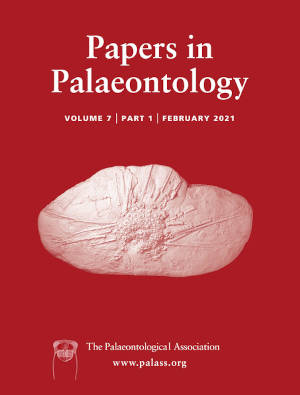Reg. Charity No. 1168330

Oviraptorosaurs, like many coelurosaurians, are frequently diagnosed using incomplete or fragmentary skeletal remains, with factors such as body size often used to assign material to a particular taxon or as a basis for describing new species. Here we describe a partial skeleton, ROM VP 65884, from the Hell Creek Formation (Montana, USA), and through morphological and phylogenetic comparisons identify it as belonging to Caenagnathidae, and probably referable to Anzu wyliei. We perform multi-element osteohistological sampling of the tibia, fibula, manual phalanx, rib and gastralium of ROM VP 65884 to determine the ontogenetic status of the individual, and to perform a detailed assessment of the intra-skeletal variation present in a series of histological proxies for growth and development. Skeletochronological analysis suggests ROM VP 65884 was still actively growing at time of death. Lacunar area was variable, but consistent with values reported for other dinosaurs and vertebrates. Osteocyte lacunar density was found to be relatively similar to the few previous measurements known from coelurosaurian dinosaurs, and preserved no ontogenetic pattern. Osteocyte lacunar density (OLD) was much higher in sampled rib and gastralia elements when compared to limbs, and the high variability in OLD overall lends further support against the hypothesis of this feature acting as a proxy for mass-specific growth rate. Our results stress the importance of using osteohistological analyses to constrain variation and permit ontogenetic assessment, and suggest caution be taken when using size as a determinant for referral of disassociated elements to specific or new coelurosaur taxa.